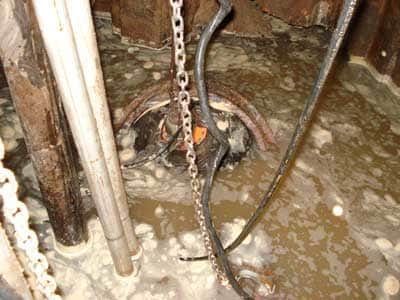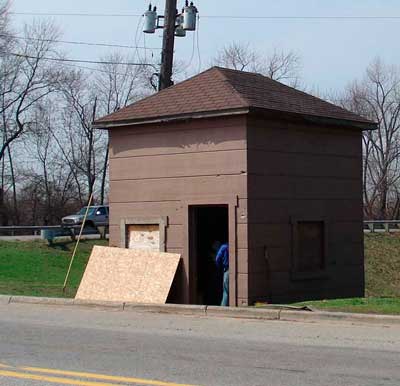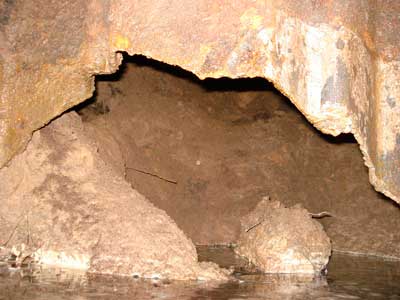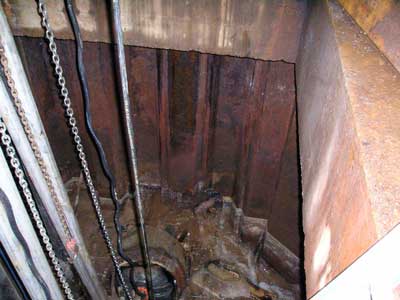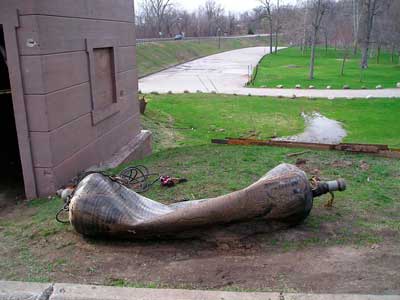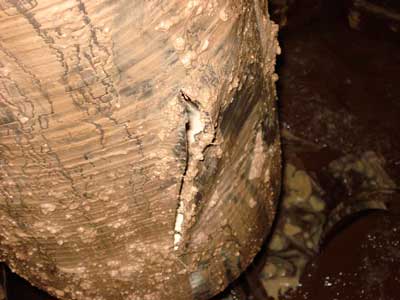Norwich Facing Fines Following Trench Collapse That Injured Town Worker
The worker was not, for instance, protected by a “trench box”
By Rob Wolfe
Staff Report
Monday, November 13, 2017
Norwich, VT — State officials are proposing to fine the town of Norwich $28,000 for four safety violations in connection with an October trench collapse that injured a worker on Beaver Meadow Road.
Town workers were helping a local contractor replace a culvert on Oct. 5 when a roughly 9-foot-deep trench gave way and fell on a municipal employee, sending that person, whom officials have declined to name, to the hospital.
The Vermont Occupational Safety and Health Administration last week found the town responsible for four safety violations. All were categorized as “serious” breaches, bringing a fine of $7,000 each.
A Nov. 7 citation from VOSHA says that Norwich failed to instruct employees on safety procedures, conduct daily inspections of the site, provide adequate protection for trench workers or use a proper traffic control plan when working in the road.
The worker was not, for instance, protected by a “trench box” — a metal frame that holds the earth in place and protects from cave-ins. Town officials have said they opted to slope the sides of the trench so as to avoid collapse.
Norwich has 20 calendar days after the state’s citation to pay the fine or file an appeal.
======================
Norwich Awaits Safety Findings
By Rob Wolfe
Valley News Staff Writer
Tuesday, October 24, 2017
Norwich VT
Norwich, VT — As they prepare to spend nearly $1.8 million on repairs to roads damaged during a July 1 storm, town officials are waiting for results of a state safety investigation into a roadwork accident earlier this month.
A town employee on Oct. 5 was helping an area contractor replace a culvert on Beaver Meadow Road when a 9-foot-deep trench collapsed, trapping and injuring the worker, who was not protected by a trench box, according to Town Manager Herb Durfee.
Officials at the Vermont Occupational Safety and Health Administration confirmed that the incident had occurred but said an ongoing inquiry prevented them from describing it in detail.
“It’s under investigation,” Les Burns, chief compliance officer for VOSHA, said in a telephone interview on Monday, adding that state officials may reach a conclusion as soon as next week.
Burns said a town employee had gone to the hospital, but declined to describe the person’s injuries. Durfee said the employee had undergone “some pretty significant surgery” for injury to his ribcage.
“He is recovering,” Durfee said of the employee, whom he declined to name. “He’ll be out of work for a while until he’s fully recovered.”
Durfee said state regulations require people working in trenches more than 4 feet deep to either use a trench box, which is a metal cage that keeps them from being crushed, or to slope the sides of the trench to avoid collapse.
Norwich employees and contractors used the latter precaution, Durfee said. The town manager added that the state official investigating the incident had told him a finding of “willful” injury was unlikely in VOSHA’s investigation.
Last month, VOSHA fined the city of Burlington $44,000 after a surprise inspection of a worksite in June revealed that city employees had not properly shored up a trench that was more than 5 feet deep. Workers also left soil too close to the trench opening, according to Seven Days.
Meanwhile, the Norwich Selectboard last week voted unanimously to approve nearly $1.8 million in expenditures for storm repairs to Turnpike Road, Upper Turnpike Road, Needham Road and Tigertown Road.
A chain of rainstorms that swept across the Twin States on July 1 caused tens of millions of dollars in damage and sparked presidential disaster declarations that made federal aid available for affected Vermont and New Hampshire counties.
Norwich officials intend to apply for reimbursement for that roadwork from the Federal Emergency Management Agency, but first they must bid out and pay for the repairs, Durfee said.
“It does present a little bit of a cash flow issue,” he said.
The town may need to open a line of credit to cover the costs, which for now are coming out of the municipal undesignated fund and reserve funds, Durfee said.
Selectboard members last week accepted a recommendation from their engineering consultants, Pathways Consulting, that the town go with a bid of just under $1.8 million from Nott’s Excavating in White River Junction for the latest work.
Durfee said town officials were planning to complete these fixes by year’s end. If weather interferes, the fallback will be to widen one-lane roads to two lanes, he said.
“We’re very pleased with the continuing patience of the folks who live off these roads,” he said on Monday.
In the immediate aftermath of the July storms, the Public Works Department billed about $500,000 in emergency repairs that the town also hopes FEMA will help cover.
It may be well into 2018 before money arrives from the federal agency, Durfee said. FEMA typically reimburses 75 percent of applicable costs, with the state picking up another 12.5 percent and the remainder falling to municipalities.
More work is to come. Washouts on Beaver Meadow Road are so deep — down to bedrock, in some places — that intensive engineering will be necessary, pushing the start date for those repairs to 2018, Durfee said.



























